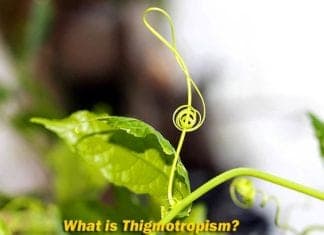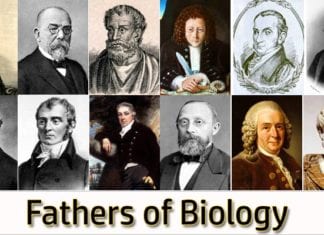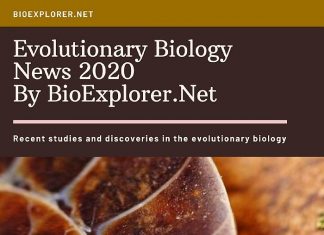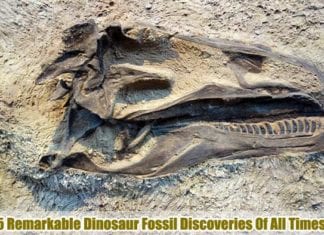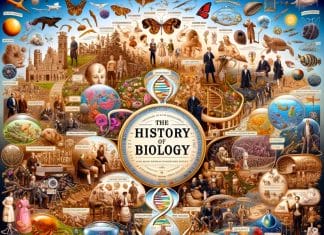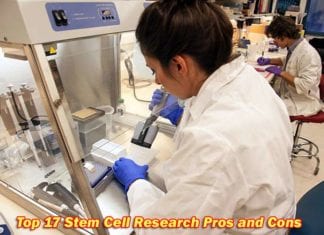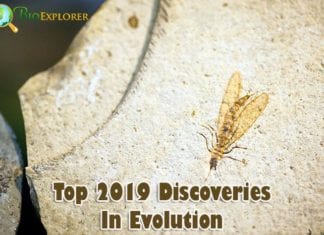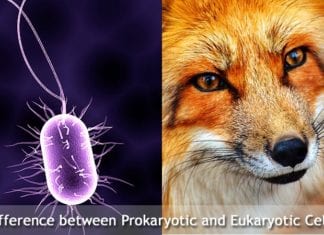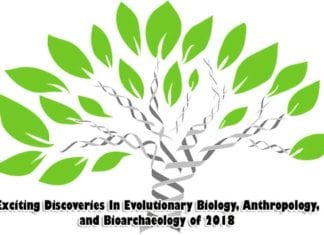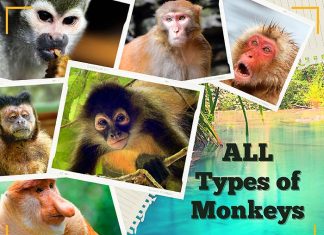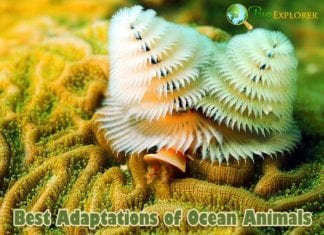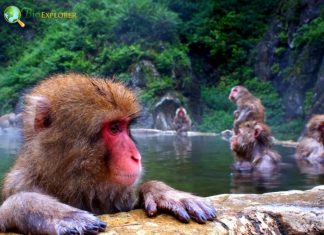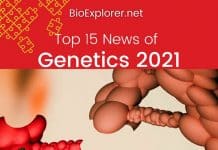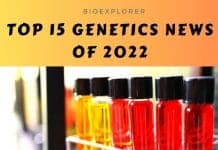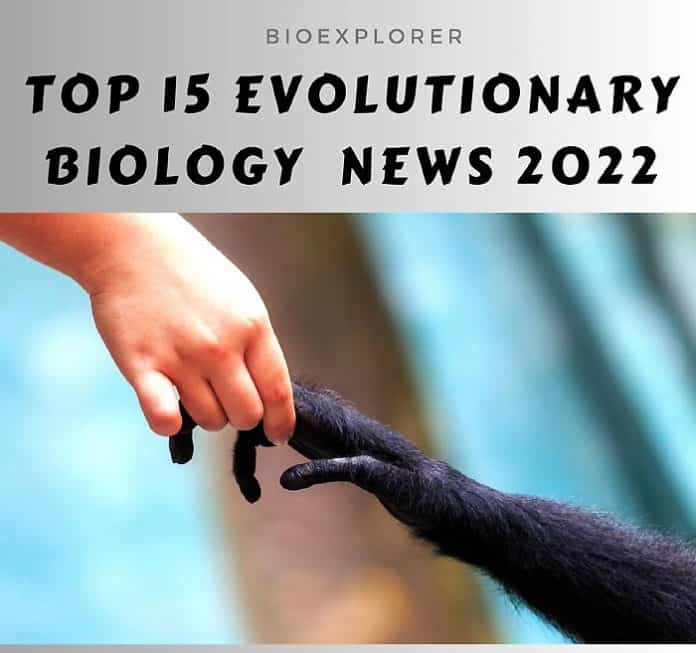
These topics highlight the field of Evolutionary Biology in 2022. In 2021, we dealt with the concept of evotype, brain behavior, its development, and the evolutionary impact of novel genes contributing to longevity. Present status deals with crop adaptation in response to changing climatic conditions, primitive RNA and the origin of life, evolutionary roles of transposons, the evolution of fungi, pluripotent stem cells, and more. Let’s take a glimpse at the research findings of 2022 in this field with broader perspectives.
Table of Contents
- Top 15 Evolutionary Biology News of 2022
- 1. Scientists are examining the status of knowledge regarding the roughly 500 million years ago plant colonization of the land (Germany, June 2022)
- 2. The Darwinian principle of slow progress is back, and a new study explains it (UK, Mar 2022)
- 3. Researchers find out why symmetry is favored by evolution (Norway, Mar 2022)
- 4. Discovery of a new enormous dinosaur explains why many prehistoric meat-eaters had such small arms (USA, July 2022)
- 5. An RNA molecule that researchers have created may shed light on the potential origins of life (Japan, Mar 2022)
- 6. Genome research reveals a new branch in the evolution of fungi (Canada, Nov 2022)
- 7. The cellular mechanism and the molecular path that leads to the development of adult pluripotent stem cells have been found by researchers (USA, Dec 2022)
- 8. According to a recent study, the human brain and octopus brain share the same “jumping genes” (Italy, June 2022)
- 9. According to a recent study, the variety among bony fish is largely driven by a relatively recent invention (USA, July 2022)
- 10. New forms of microfossils may provide information on how and when prokaryotes evolved into eukaryotes (Japan, Sep 2022)
- 11. Researchers find human-specific genes while looking for the origins of our evolutionary individuality (USA, Mar 2022)
- 12. An evolutionary gap in the apes’ history has been filled by the discovery of the first gibbon fossil (USA, Sep 2022)
- 13. Developmental dyslexia, according to researchers, is crucial for successful human adaptation (UK, June 2022)
- 14. Scientists use zebrafish embryonic development to shed light on the evolutionary history of jaws in vertebrates (USA, June 2022)
- 15. Study of teeth of wild Japanese macaques inspires reconsideration of human evolution (New Zealand, Mar 2022)
- Conclusion
Top 15 Evolutionary Biology News of 2022
1. Scientists are examining the status of knowledge regarding the roughly 500 million years ago plant colonization of the land (Germany, June 2022)

Plant colonization began some hundred million years after the Earth’s formation. The invasion accelerated the modification of the atmosphere and sparked a metamorphosis of the hostile environment, laying the groundwork for the emergence of modern-day life on land. This was only possible once plants, previously only found in freshwater inland ecosystems and oceans, invaded the continents.
- Scientists have been examining the state of knowledge regarding the colonization of the land by plants approximately 500 million years ago.
- After a streptophyte alga traveled from an aquatic home into shore zones before completely shifting onto land over 500 million years ago, the continents only started to turn green after this process, which involved several molecular and morphological changes, was complete.
- Plants showed remarkable adaptability during Earth’s ongoing changes and significantly changed the climate, primarily by fixing carbon dioxide (CO2) on a large scale. To increase our understanding of evolutionary processes and molecular adaptation, scientists are examining the genomes of organisms that have historically played important roles in terrestrialization, such as mosses, lycopods, ferns, and algae.
- As they are much more recent than plants, humans are to blame for many of the planet’s and its climate’s major changes. The tremendous pace of those changes is a significant issue because nature has little opportunity to adjust.
- When man perfected agriculture and animal husbandry, which resulted in constant population growth and the clearing of ever more land for farming, the speed of human-caused change accelerated.
The research tries to pinpoint the mechanisms that helped to lessen the increasingly unfavorable conditions for life on land as they evolved. They are relevant regarding climate change, particularly crop adaptation in response to changing climatic conditions.
Suggested Reading:
Explore The World of Thigmotropism
2. The Darwinian principle of slow progress is back, and a new study explains it (UK, Mar 2022)

Darwin and other thinkers have long struggled to explain sudden changes in animal evolution. The assumption of Darwin’s theory of evolution is now supported by a recently published study report, which claims that even these sudden changes are supported by a steady directional process of successive incremental modifications.
- To explain these abrupt shifts and protracted periods of stasis that have been observed in the evolutionary history of some species, evolutionary biologists suggest a new statistical model.
- They used a statistical model to reconstruct the body-size changes throughout more than 2800 mammal species’ 170-million-year history.
- It was shown that even though there are times when rapid changes in size occur in some mammals, these occurrences can be explained as “normal” changes that draw on the inherent variety that evolution frequently introduces to wild populations.
- According to Darwin’s theory of evolution by natural selection, organisms will undergo slow, incremental changes over extremely long periods. But very sudden changes in the sizes, forms, colors, and other characteristics of creatures are regularly seen in the fossil record, and this has been used for at least fifty years to refute the Darwinian orthodoxy.
- In this study, I will demonstrate that even these sudden shifts may be explained as instances of directional selection, which occurs when natural selection forcefully pulls a trait in one direction. There is no need for any unique extra-Darwinian mechanisms.
This statistical model offers a foundation for tolerating what had previously irked theorists like Darwin.
Suggested Reading:
Uncovering the Fathers of Biology: The Geniuses Who Unveiled Life’s Secrets
3. Researchers find out why symmetry is favored by evolution (Norway, Mar 2022)
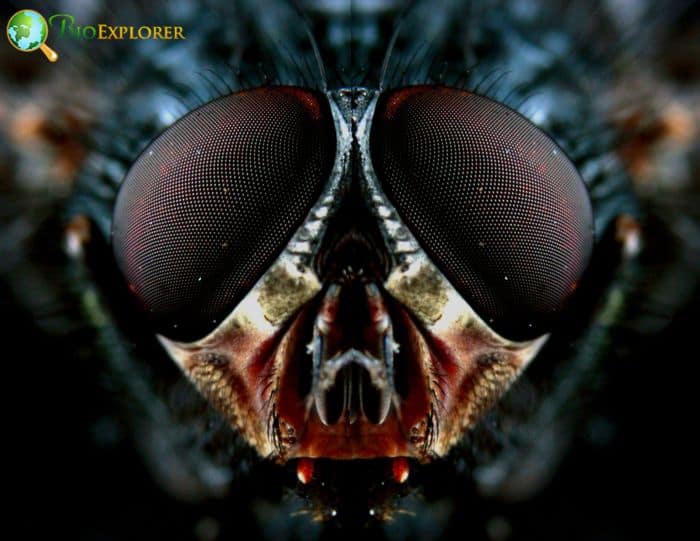
Biology is filled with symmetry, from sunflowers to starfish. Is there an innate propensity for symmetry in evolution? Researchers from biology, computer science, and mathematics from around the world explain this.
- Scientists claim that the overwhelming preference of evolution for simple “algorithms“, that is, simple instruction sets or instructions for constructing a given structure, is why symmetric and other basic forms occur so frequently.
- To investigate how this preference develops in biology, the scientists turned to computational modeling. They demonstrated that many more hypothetical genomes describe simpler algorithms than more complicated ones.
- Simple algorithms and the more symmetric structures they produce are more likely to be found as evolution searches through potential genomes. The researchers then made a profound connection between this evolutionary picture and algorithmic information theory.
- The researchers demonstrate that many biological structures and systems adopt probabilistically simple algorithmic structures, including proteins, RNA, and signaling networks.
- They intend to look into their theory’s predictions for biases in more extensive developmental processes in the future.
This propensity towards descriptive simplicity can be quantified by studying algorithmic information theory, which can formalize these intuitions.
Suggested Reading:
Top 10 Evolutionary Biology News of 2020
4. Discovery of a new enormous dinosaur explains why many prehistoric meat-eaters had such small arms (USA, July 2022)
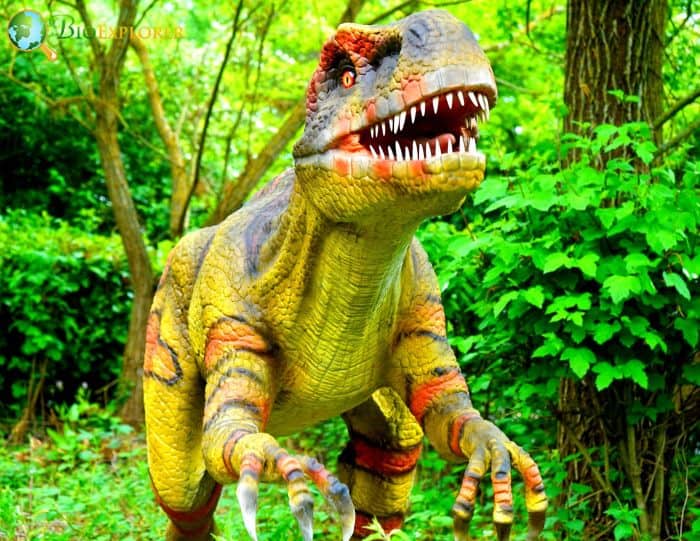
Meraxes gigas, a new enormous meat-eating dinosaur found by a team of scientists, offers insights into the biology and evolution of dinosaurs like Carcharodontosaurus and Tyrannosaurus rex, specifically why these creatures had such large skulls and small arms.
- Meraxes was first uncovered by researchers in Patagonia in 2012, and they have since extracted, prepared, and studied the specimen.
- Meraxes was a huge carcharodontosaurid, but it wasn’t the largest. It measured around 36 feet from snout to tail tip and weighed about 9, 000 pounds.
- Although they come from completely distinct branches of the meat-eating dinosaur family tree, it was discovered that the body layout is strikingly similar to tyrannosaurs like T. rex.
- The researchers discovered that the three families of therapods’ big, mega-predatory dinosaurs all matured similarly based on the statistical information Meraxes gave. Their arms gradually got shorter, and their skulls grew as they evolved.
- According to the study, the tremendous growth of the heads is causing the arms to become smaller. The limbs now serve a secondary purpose, regardless of what they may or may not have been employed for, while the cranium is modified to handle larger prey.
- Additionally, the researchers discovered that species of carcharodontosaurids from Patagonia evolved rapidly before abruptly disappearing from the fossil record not too long after. It’s one of those discoveries that provide some answers while raising new ones.
There has been a lot of discussion and conjecture on the potential functions of the little forelimbs in T. rex and other huge predatory dinosaurs. We were able to research this question because of this new finding.
Suggested Reading:
15 Best Dinosaur Fossil Discoveries of All Times
5. An RNA molecule that researchers have created may shed light on the potential origins of life (Japan, Mar 2022)

For the first time, scientists have been able to engineer an RNA molecule that replicates, diversifies, and gains complexity by Darwinian evolution. The first empirical data now support creating complex lifelike systems from basic biological molecules.
- Even though this hypothesis has been extensively discussed, building such RNA replication systems has proven challenging.
- The group describes their long-term RNA replication experiment, which observed the evolution from a chemical to a complicated biological system. They discovered that a single RNA species evolved into a sophisticated replication system, a replicator network made up of five different RNA types interacting in a variety of ways.
- This finding lends credence to an evolutionary transition scenario that has been long thought to be possible. This RNA replication system can go through Darwinian evolution, a self-replicating process of ongoing change based on mutations and natural selection.
- This allowed for the emergence of various features and the survival of those best suited to the environment. According to the “competitive exclusion principle” of evolutionary biology, two species vying for the same resources cannot coexist.
- For sustained diversification, the molecules must find a mechanism to exploit various resources simultaneously. We questioned if non-living chemical organisms might spontaneously evolve such innovation since they are merely molecules.
- Comparing this molecular replication mechanism to biological creatures, we can investigate evolutionary events with clarity that has never been possible. Just the beginning of complexity evolution may be noticed in the experiment.
Although there are still many unanswered problems, this research has added a more empirically based understanding of the potential evolutionary path that an early RNA replicator on ancient Earth may have taken. The findings may hold the key to answering the fundamental query that people have been pondering for millennia: where did life begin?
Suggested Reading:
History of Biology
6. Genome research reveals a new branch in the evolution of fungi (Canada, Nov 2022)
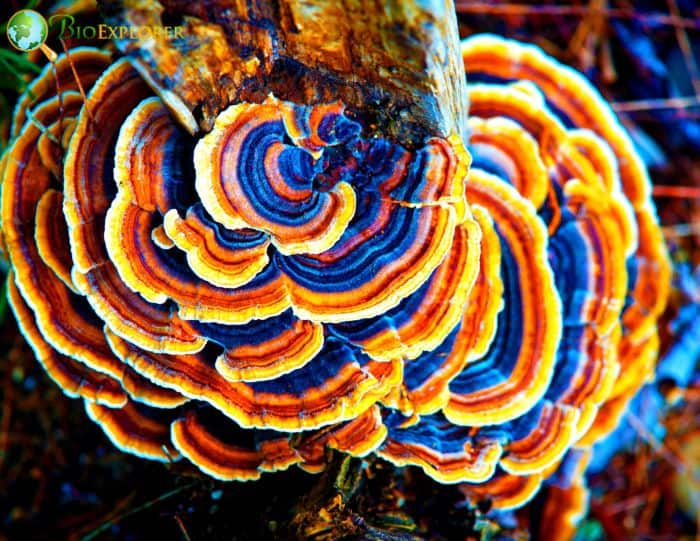
According to a research team that employed genome sequencing to classify these strange organisms, some 600 seemingly unrelated fungi that never quite found a fit along the fungal family tree have been shown to have a common ancestor.
- The scientists discovered that this new family of fungi, the Lichinomycetes, originated from a single source 300 million years ago, or 240 million years before the extinction of the dinosaurs, using DNA-based dating techniques.
- These “oddball” fungi used to be dispersed throughout seven separate classes, a high-level classification corresponding to the groupings known as mammals or reptiles in animals.
- After collaborating to collect samples from the fungi, a group of scientists from seven different nations sequenced 30 genomes and discovered that all but one of the classes had a common ancestor. Although they were categorized, they were kept from being connected since they were divided into dissimilar categories on the fungal side of the Tree of Life.
- These fungi come in various shapes and sizes, such as earth tongues, unsettling tongue-shaped fungi that emerge vertically from the ground, beetle gut microorganisms, and a fungus discovered in tree sap in northern Alberta.
- They also contain rare lichens that can endure harsh environments, such as South America’s world’s driest non-polar desert, the Atacama Desert. The most amazing thing about these fungi is how similar their genomes are, despite how dissimilar they appear to be.
- The research hypothesizes that this type of fungi is dependent on other creatures for life based on their genomes, which are tiny in comparison to those of other fungi.
The new findings will be crucial to the larger study of fungal evolution, particularly how fungi inherit crucial biotechnological traits like plant matter-degrading enzymes. The new group might also provide fresh data on previous fungal extinctions.
Suggested Reading:
How Do Viruses Reproduce?
7. The cellular mechanism and the molecular path that leads to the development of adult pluripotent stem cells have been found by researchers (USA, Dec 2022)

Cells can be replaced, restored, repaired, and regenerated using stem cells, but in most animals and humans, these cells can only regenerate the cell types to which they have been assigned. Many invertebrates, including sponges, hydras, planarian flatworms, and acoel worms, contain pluripotent stem cells and can thus regenerate almost any lost cell type. Nevertheless, it remains to be seen how they are made.
- In a recent study, researchers determined the cellular process and chemical path that led to developing aPSCs in the acoel worm Hofstenia miami.
- The three-banded panther worm, or H. miamia, is a species that can completely regenerate via aPSCs referred to as “neoblasts. ” Animals with the ability to regenerate share the presence of pluripotent stem cells in adult bodies as one commonality.
- Because these worm hatchlings include aPSCs, the researchers reasoned that they must be produced during embryogenesis. The introduction of the protein Kaede into the cell by transgenesis resulted in a line that gave a bright green glow to embryo cells.
- Kaede is photo-convertible; thus, when a laser beam with a specific wavelength is shone on green, it changes into red. The individual green cells of the embryo can then be laser-zapped to change their color from green to red.
- An innovative method developed in the lab to determine the destinies of embryonic cells is using transgenic animals with photoconversion. As the embryo divided into many cells from a single cell, its growth was observed.
- Kimura created a complete fate map at the eight-cell stage by methodically performing photoconversion on every early embryonic cell to ascertain its function. He discovered a very particular pair of cells at the embryo’s sixteen-cell stage that gave rise to cells that appeared to be neoblasts.
- The degree of gene expression in stem cells-which must express hundreds of genes-is another characteristic that distinguishes them. Only the progeny of the 3a/3b cells were found to match stem cells at the molecular level after tracking and testing.
This study identifies a group of genes that may serve as crucial regulators of stem cell development. The mechanism by which these genes function in the stem cells of Hofstenia miamia will be further explored by the researchers, and this will assist in revealing how nature created a method for producing and maintaining pluripotent stem cells.
Suggested Reading:
Top 17 Stem Cell Research Pros and Cons
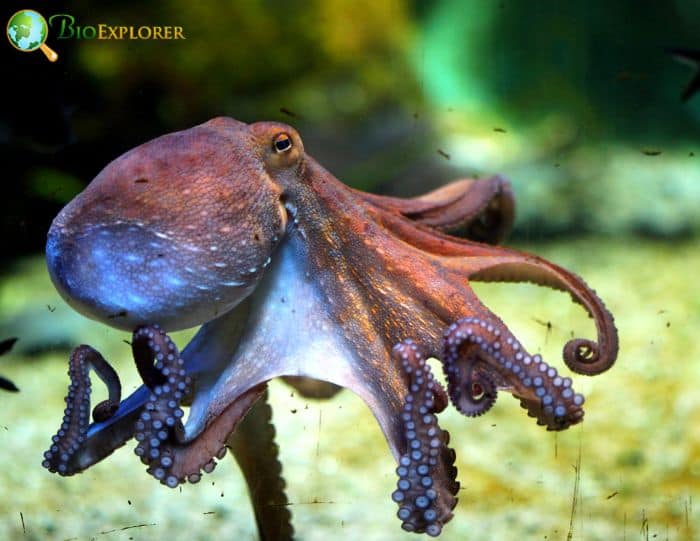
The octopus has incredible brain complexity and cognitive abilities that resemble vertebrates in many ways. According to a recent study, these creatures’ neurological and cognitive complexity may have its roots in a molecular similarity to the human brain.
- Molecular copy-and-paste or cut-and-paste mechanisms allow transposons, also known as “jumping genes, ” to “move” from one point to another of an individual’s genome, shuffling or duplicating, as early as 2001 when the human genome was sequenced.
- These mobile elements typically don’t say anything. The ones from the so-called LINE (Long Interspersed Nuclear Elements) family, present in the human genome in 100 copies and may still be active, are the most significant.
- ‘Jumping genes’ are abundant in the octopus’ genome, just like ours, albeit the majority are inactive. The researchers discovered a component of the LINE family in regions of the brain that are essential for these animals’ cognitive capacities by concentrating on the transposons still capable of copy-and-paste.
- The discovery enabled the analysis of the molecular makeup of the genes active in the octopus nervous system using next-generation sequencing methods.
- The finding that a member of the LINE family is active in the brains of the two species of octopuses is extremely important because it supports the notion that these elements have purposes other than simple copy-and-paste.
- This similarity between humans and octopuses, which demonstrates the activity of a LINE element in the region of the brain responsible for cognitive abilities, could be explained as an intriguing example of convergent evolution, a phenomenon for which the same molecular process develops independently in two genetically distinct species in response to similar needs.
To advance our understanding of intelligence development, we should explore this identified LINE element, which is a very intriguing candidate. Thanks to this discovery, we can unravel the mystery of these amazing critters’ intellect.
Suggested Reading:
What Do Octopuses Eat?
9. According to a recent study, the variety among bony fish is largely driven by a relatively recent invention (USA, July 2022)
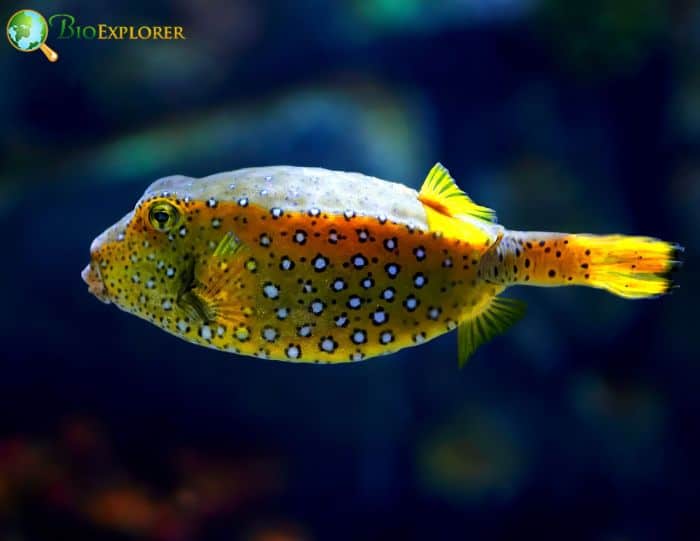
Fish inhabiting coral reefs come in a stunning variety. According to a recent biologist study, the bony fish’s relatively recent adaptation of feeding by biting food from surfaces accounts for a large portion of this diversity.
- The majority of bony fish, or teleosts, did not begin grazing, nibbling, or gnawing food off rocks and corals until after the mass extinction of dinosaurs at the end of the Cretaceous period, or about 60 million years ago, even though jawed fish first appear in the fossil record almost 500 million years ago.
- Reef fish today consume food in a variety of ways. Many quickly stretch their heads to suck floating food into their mouths.
- It is believed that teleosts first used suction feeding. There are also a smaller number of “ram biters “, which effectively swim onto food with their mouths open. Many coral fish bite their food off hard surfaces, including well-known species like parrotfish, butterflyfish, and triggerfish.
- The researchers categorized the 1, 530 live reef fish species by feeding strategy and plotted them into the teleost evolutionary tree. The pace of body shape evolution was also investigated in all of these fish.
- They discovered nearly all of the fish in these lineages were suction feeders towards the end of the Cretaceous. Today, “benthic biters” that creep on the substrate make up four of ten reef species. They found that the body shapes of biting species change almost twice as quickly as suction feeders.
- Coral reefs underwent alterations at the end of the Cretaceous, becoming more intricate and branching structures that improved grazing. Teleosts also developed shorter jaws, which were superior for biting.
The study demonstrates that biting took off once it evolved, which could account for the current high rates of body form evolution and the diversity of biters. Reef fish could access a variety of new prey through biting, which encouraged the evolution of many different body types.
Suggested Reading:
Top 2019 Discoveries in Evolution
10. New forms of microfossils may provide information on how and when prokaryotes evolved into eukaryotes (Japan, Sep 2022)
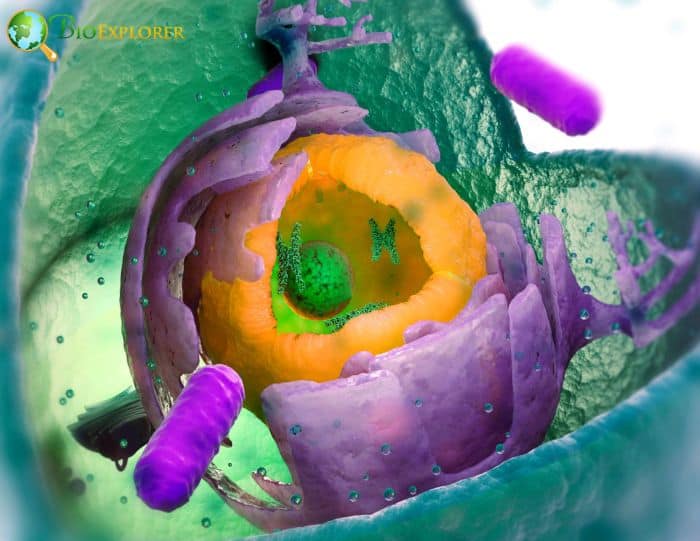
The question of when and how prokaryotes evolved into eukaryotes has long been debated among scientists. A geological study of the Gunflint Formation, which borders Lake Superior’s northwest side, was conducted by a research team, and new types of microfossils with an estimated age of 1.9 billion years have been discovered.
- They discovered 5 different microfossil forms after examining the specimens’ three-dimensional shape and size distribution: colonial, ellipsoidal, intracellular inclusion-bearing (ICI), spinous, and tail-bearing varieties.
- The recently discovered ones are more useful. The ICI microfossils were rich in nutrients, unlike the ellipsoidal microfossils, which resemble modern cyanobacteria and have developed to increase their endurance in severe settings.
- As shown by this research, the microbes evolved to store nutrients that could withstand environmental stress. The morphological characteristics of eukaryotes, including movement and nutrition transport between cells, were evident in the spinous and tail-bearing forms.
- Despite the fact that cells are prokaryotes by definition due to their size, they have eukaryotic functions. This suggests that prokaryotes may have started functional diversification and evolutionary preparation before the development of eukaryotes 1.8-1.6 billion years ago.
- The group hypothesizes that the particular environment at the time made it easier for microbial forms to diverge and grow. The collision of the land masses sped up oxidative weathering from the new continent to the ocean.
- As a result, the marine ecosystem became unstable due to an increase in nutrient inputs and an increase in seawater temperature. Under these circumstances, microbes undoubtedly altered their form to survive, allowing eukaryotes to emerge.
The team’s ground-breaking discovery will have geological relevance and benefit the fields of life sciences and evolutionary biology by allowing researchers to better understand the time and conditions that led to the transition of prokaryotes into eukaryotes.
Suggested Reading:
Difference Between Prokaryotic And Eukaryotic Cells
11. Researchers find human-specific genes while looking for the origins of our evolutionary individuality (USA, Mar 2022)

Students have found human microRNA genes unique to humans and do not exist in other primate species. These genes may have been crucial in the distinct evolution of the human species.
- Using genome alignment methods, the scientists carefully searched for novel genetic components specific to humans by comparing the most current draughts of the human and chimpanzee genomes.
- Starting with chromosome 21, the smallest human chromosome, researchers were shocked to discover a sizable area of human-unique DNA called 21p11 that contains several orphan microRNA genes.
- The study discovered that human chromosome 21’s long arm corresponds well with other existing ape species. Still, the short arm did not, indicating that this part of the human genome has recently and significantly diverged from other primates.
- Their examination of ancient human genomes revealed that these modifications existed before the split between Neanderthals and modern people. The genes also exhibit little to no sequence-based variation in the population of contemporary humans.
- The researchers hypothesized that the microRNA (miRNA) genes miR3648 and miR6724, discovered in that area, presumably originated somewhere in the previous seven million years and are unique to humans.
- The scientists used computational techniques to find that there is a strong possibility that the relevant miRNAs’ anticipated gene targets are involved in embryonic development. Both miR3648 and miR6724 have been found in tissues across the whole human body, including the brain, and they may have had a role in developing the most distinctive organ in the human body.
- The results support the fascinating hypothesis that these microRNA genes had a role in our species’ distinctive evolution and humanity’s distinctiveness.
Further investigation is necessary after this study showed a novel potential method for duplicating rRNA genes to produce additional miRNA genes.
Suggested Reading:
Top 15 Evolutionary Biology News in 2018
12. An evolutionary gap in the apes’ history has been filled by the discovery of the first gibbon fossil (USA, Sep 2022)
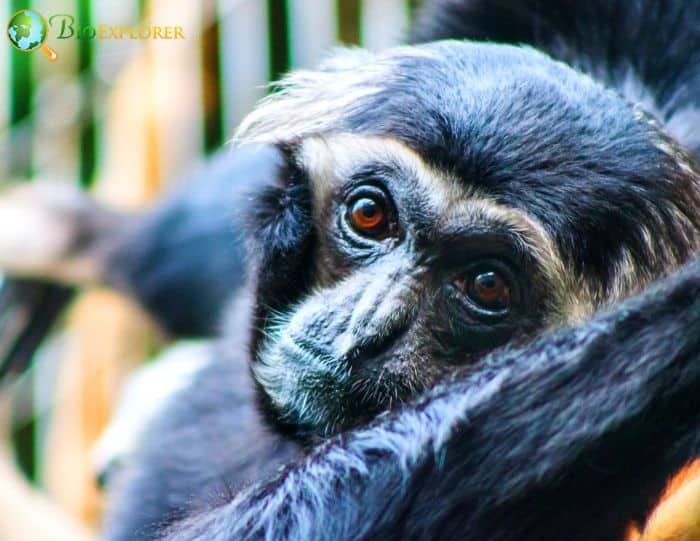
A team of researchers has found the earliest gibbon fossil, filling a long-missing evolutionary gap in the apes‘ evolutionary history. The study focuses on the 20 living gibbon species of the hylobatid ape family, found in tropical Asia from north-eastern India to Indonesia.
- Fossilized remains of hylobatids are extremely rare; the majority of the specimens are isolated teeth and broken jaw bones discovered in cave sites in southern China and southeast Asia that are no older than 2 million years old.
- The fossil of a little ape known as Yuanmoupithecus xiaoyuan was found in the Yuanmou region of Yunnan Province in southwest China. The Yuanmoupithecus teeth and cranial specimens were the subjects of the analysis, including an infant’s upper jaw that was less than two years old at the time of death.
- According to the scientists’ estimates based on the size of the molar teeth, Yuanmoupithecus was roughly the same size as modern-day gibbons and weighed around 6 kilograms or 13 pounds.
- Although Yuanmoupithecus’ teeth and lower face are remarkably similar to modern gibbons, the fossil species was more primitive in several areas, suggesting that it was the ancestor of all surviving species.
- Genetic research suggests that the hylobatids separated from the ancestors of humans and big apes between 17 and 22 million years ago, leaving a 10-million-year gap in the fossil record.
More precisely, this discovery advances our knowledge of the development of this ape family and extends the fossil record of hylobatids back to 7-8 million years ago.
Suggested Reading:
334 Types of Monkeys
13. Developmental dyslexia, according to researchers, is crucial for successful human adaptation (UK, June 2022)

According to Cambridge experts who have been examining cognition, behavior, and the brain, people with dyslexia are uniquely equipped to explore the uncharted. This willikelycrucialin how humans adjust to shifting environments.
- According to researchers, this “explorative bias” has evolutionary roots and is essential to survival. The researchers contend that we need to reconsider our understanding of dyslexia as a neurological illness in light of the findings, evident across numerous domains, from visual processing to memory and at all levels of analysis.
- The cognitive trade-off between exploring new information and using what is known results in the areas of difficulty experienced by people with dyslexia. On the plus side, this trade-off results in an explorative bias that may explain why some people with dyslexia have more advanced abilities in areas like creativity, invention, and discovery.
- The hypothesis of “Complementary Cognition ” contends that our ancestors evolved to specialize in various but complementary methods of thinking, which strengthens the capacity of humans to adapt through cooperation.
- This theory is used to explain the current discoveries. These cognitive specializations have their roots in the well-known trade-off between the pursuit of new knowledge and the use of what is already known.
- We must balance our desire to use known resources for survival with our drive to seek new resources, just like in any complex system. Given this trade-off, an explorative specialty in dyslexic individuals may aid in explaining why they struggle with exploitation-related tasks like reading and writing.
- It may also explain why those with dyslexia favor creative, engineering, architectural, and entrepreneurial careers, which call for skills connected to the investigation.
This study suggests a fresh framework to help us comprehend the cognitive advantages of people with dyslexia. The results have ramifications for both the individual and the larger society. The study emphasizes that cooperation between people with diverse capacities may contribute to understanding our species’ remarkable capacity for adaptation.
Suggested Reading:
How To Become A Psychiatrist?
14. Scientists use zebrafish embryonic development to shed light on the evolutionary history of jaws in vertebrates (USA, June 2022)
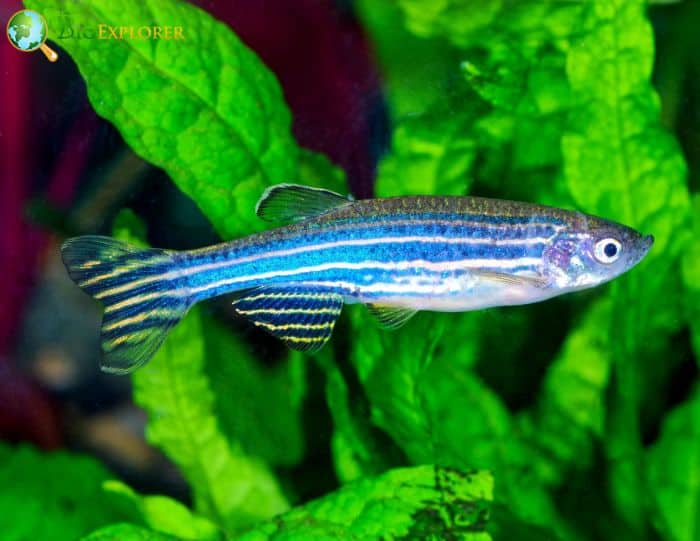
Jaws had not yet developed in deep-water species five hundred million years ago. Scientists are now providing information regarding the genesis of this fascinating evolutionary development in vertebrates.
- For this work, scientists used a technique known as “evo-devo ” to examine embryonic development as a tool to understand evolution.
- Fish gills and jaws both develop from the same embryonic ancestor. Jaws and gills originate from “pharyngeal arches “, embryonic features throughout development. The mandibular arch is the first of these arches because it gives rise to the jaws, whereas the other arches give rise to the gills.
- Additionally, there are anatomical parallels since the gills are supported by upper and lower bones comparable to the upper and lower jaws. According to the developmental and anatomical evidence that led to this view, the jaw evolved by modifying an ancestral gill.
- A “pseudobranch “, a microscopic anatomical feature that resembles a dormant gill, is present in almost all fish species. The embryonic origin of this structure, however, was unknown. The researchers demonstrated in zebrafish that the pseudobranch develops from the same mandibular arch that gives rise to the jaw.
- They did this by using sophisticated imaging and cell-tracking techniques. The researchers demonstrated how many of the same genes and regulatory systems control the growth of the pseudobranch and the gills.
- According to the findings, the mandibular arch has the essential components to create a structure resembling a gill. This suggests that the jaw and pseudobranch, which arise from the mandibular arch, may have originally been gills that evolved over a long period through deep evolution.
The research suggests that the final common ancestor of all jawed vertebrates had a pseudobranch. The finding offers tantalizing fresh proof for the well-established notion that the vertebrate jaw originated from a gill-like structure.
Suggested Reading:
Explore 15 Remarkable Adaptations of Ocean Inhabitants
15. Study of teeth of wild Japanese macaques inspires reconsideration of human evolution (New Zealand, Mar 2022)

It is believed that unusual tooth wear on our fossil predecessors’ teeth is only present in humans and reveals particular tool use. These outfits have also been identified as the first examples of our ancestors’ cultural practices. However, research findings on tooth wear in wild Japanese macaques have important ramifications.
- Researchers looked at root grooves and broad, consistent scratches on the macaques’ teeth that had only been seen in fossilized humans before.
- We describe identical tooth wear in a population of wild monkeys who don’t use tools, which raises the possibility that this theory has to be re-examined. This study challenges our understanding of how culture has changed throughout human evolution and implies that we may need to re-evaluate the earliest signs of cultural practices.
- The study found that eating shellfish from rocks and unintentionally chewing grit and sand with their meal caused the macaques’ front teeth to have wide, consistent scratches and their back teeth to have ‘toothpick’-like grooves.
- This particular group of macaques is well recognized for engaging in extraordinary activities, such as washing food in water and swallowing fish. Since they have been researched for more than 70 years, no evidence of them utilizing tools or other objects that might be responsible for the peculiar tooth wear has been found.
- Even though this does not rule out the possibility that hominins chewed on tools, the study makes the case that these unusual wear patterns could result from unintentional grit ingestion and ordinary food-processing habits.
The results shed light on how scholars perceive cultural alterations throughout human evolution. Today’s research on living primates could provide important hints that have gone unnoticed.
Suggested Reading:
Japanese Macaque
Species Name: Macaca fuscataConclusion
This series of evolutionary biology news gave you a detailed overview of the recent development in this field in 2022. Commencing with the evolution of plant colonization on land, the new approach of Neo Darwinism gained importance, and crucial regulators of pluripotent stem cells were established; the study suggests a fresh framework to help us comprehend the cognitive advantages of people with dyslexia. Thus, all of these key findings give way to more exciting news in 2023.


